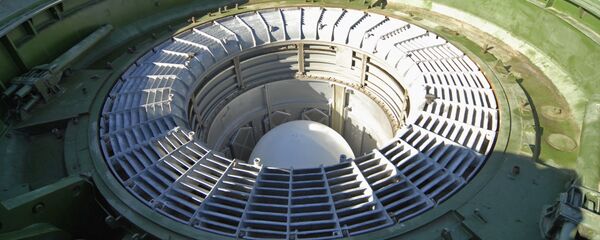"I would like to draw your attention to the fact that if we just allow ourselves to relax even for a minute, allow at least one major failure in the modernization of the army and navy, in the training of the troops, the situation may change fast," the president said.
One of the main components of Russia's ability repel all types of potential aggression is hypersonic weapons.
Russia’s Hypersonic Strategy
On October 25, Russia successfully tested a hypersonic warhead for advanced intercontinental missiles. The hypersonic vehicle (known under the development codename Izdelie 4202) was launched from a range in the Orenburg Region and reached to the Kura range in Kamchatka.
It is worth to note that the electronic systems, onboard electronic equipment and control system of Izdelie 4202 were developed and manufactured in Russia, as part of a large-scale import substitution industrial plan.
Earlier, Boris Obnosov, director of Tactical Missiles Corporation, said that Russia is developing hypersonic flying vehicles. At the same time, Commander of the Russian Missile and Artillery Forces Lt. Gen. Mikhail Matveevsky said Russia is developing a new advanced type of warheads.
On October 6, Russian Defense Minister Sergei Shoigu said that Russia used newest Kh-101 hypersonic missiles with a range of up to 4,500 km during its military operation in Syria.
A vehicle can be described hypersonic if it can reach speeds of over 4,500 kmh. A hypersonic vehicle cannot be propelled with a regular jet engine. It requires the use of a ramjet engine with supersonic combustion. Russia developed a brand-new type of fuel, the Detsilin-M, with a 20 percent increase in energy capacity.
A hypersonic warhead travels at speeds of nearly Mach 15 (seven km per second) at an altitude of 100 km. Before entering the dense atmosphere it performs a complicated maneuver to penetrate the enemy missile defense. Hypersonic weapons can overcome any of the existing types of missile defense.
Specialists expect that hypersonic missile systems will maintain military and strategic parity in the coming decades.
For example, Russia’s Sarmat heavy missile is expected to carry hypersonic missiles. Drop tests of the Sarmat missile will begin in 2017. Russia is currently developing aggression preventing weapons in all environments, including space.
On October 28, Finance Minister Anton Siluanov said that despite serious financial difficulties Russia will continue the modernization of its armed forces.
Earlier, Russian President Vladimir Putin set a goal to modernize 79 percent of the Russian military by 2020.
West Closely Watching the Situation
Citing a study by the United States Armed Force, the Washington Free Beacon reported that Washington is "falling behind Russia and China in the technology race" to develop both defensive and offensive hypersonic weapons.
"The People’s Republic of China and the Russian Federation are already flight-testing high-speed maneuvering weapons (HSMWs) that may endanger both forward deployed US forces and even the continental United States itself. These weapons appear to operate in regimes of speed and altitude, with maneuverability that could frustrate existing missile defense constructs and weapon capabilities," an executive summary of the report read.
The Danish daily newspaper Jyllands-Posten reported that the Russian military would acquire hypersonic weapons by 2020.
American analytical outlet The National Interest noted: "Once it is fielded, the Russian hypersonic glide weapons could be fielded on the Sarmat heavy ICBM or the smaller road-mobile Topol-M ICBM."
According to Spanish online publication El Confidencial, Russia is finishing development of the newest RS-28 Sarmat missile, which is aimed to replace the current R-36 Voevoda (NATO reporting name Satan).
According to the publication, the new missile has a weight of over 100 tons and a payload of 10 tons. This can be a 50-megaton warhead or 10-15 nuclear warheads capable of performing hypersonic maneuvers.
The National Interest also touched upon the Russian combat aviation.
"The Russians are not just aiming to equip the new fighter with hypersonic weapons; Moscow is designing its sixth-generation airframe to be capable of hypersonic speeds," Dave Majumdar, defense editor of the NI, wrote.
Never miss a story again — sign up to our Telegram channel and we'll keep you up to speed!





